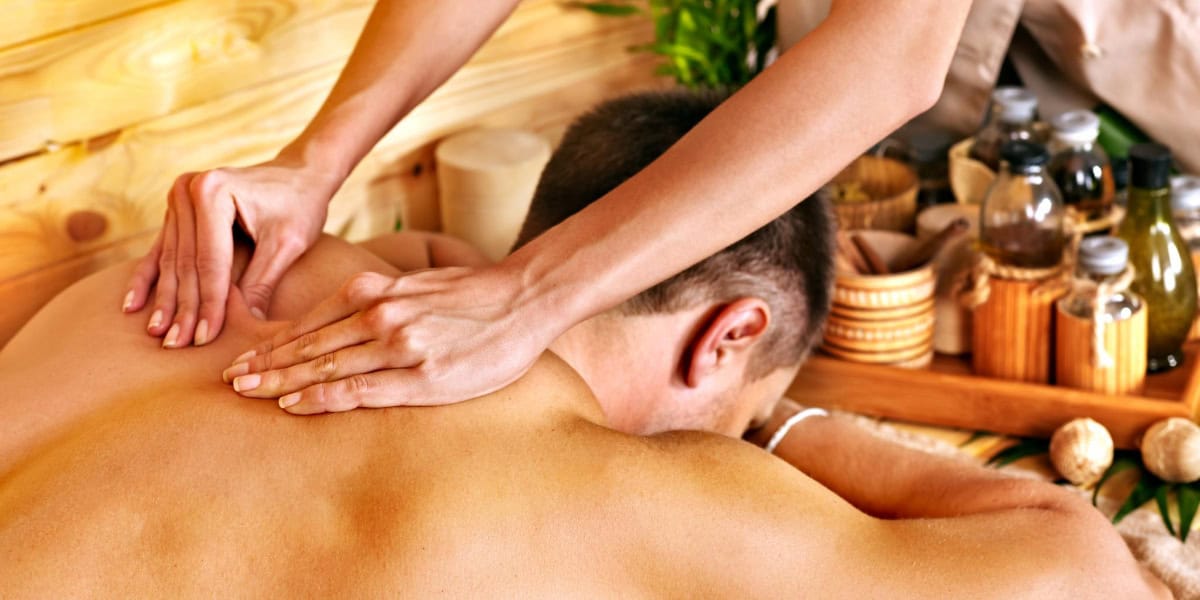Have you ever wondered what the difference is between relaxation and therapeutic massage?
Relaxation massage is often thought of as a luxurious indulgence, while therapeutic massage is seen as a more serious form of treatment.
But what exactly sets them apart? In this article, we’ll explore the differences between relaxation and therapeutic massage so that you can make an informed decision about which one is right for you.
Definition of Relaxation Massage
A relaxation massage is a type of massage that focuses on providing relaxation and stress relief. It typically involves light to medium pressure, long strokes, and gentle kneading.
The goal of relaxation massage is to help the recipient relax and reduce tension in their muscles.
Definition of Therapeutic Massage
A therapeutic massage is a type of massage that focuses on treating specific medical conditions or injuries.
It typically involves deeper pressure, specific techniques, and targeted areas. The goal of therapeutic massage is to help the recipient reduce pain, improve range of motion, and promote healing.
You will usually find those offering therapeutic massages have gain additional training and qualifications in order to offer them as a service.
What are the benefits of relaxation massage?
Relaxation massage is a great way to de-stress and unwind after a long day. It’s not just an indulgence — relaxation massage can provide some great health benefits as well.
Here are 5 benefits you can expect from having a relaxation massage.
1. Improved Circulation
A relaxation massage improves blood circulation throughout the body, allowing oxygen-rich blood to reach the body’s cells and tissues more effectively. This improved circulation helps toxins flush out of your system, reduce inflammation, and improve muscle tension. You’ll feel lighter and more energized after a relaxation massage!
2. Reduced Stress
The gentle movements of a relaxation massage help to calm and soothe the mind, reducing stress levels significantly within no time at all. By increasing levels of oxytocin — the “love” hormone in our bodies — your mood can be elevated too! Not only that but relaxation massages cause muscle spasms to release tension which has built up over time due to stress or any other type of trauma you may have experienced recently.
3. Increased Flexibility
Your muscles become malleable when kneaded during a relaxation massage, helping them relax and stretch further than they’d normally go without pushing or forcing them beyond what they’re capable of doing on their own. This increased flexibility can in turn lead to improved performance in physical activities like yoga and Pilates as well as everyday activities like walking up stairs or reaching for something high up on a shelf.
4. Boosted Immunity
Relaxation massages are known for helping boost immunity because they stimulate white blood cells which then fight off infection-causing germs more quickly and efficiently than usual. In addition, since your stress levels are reduced after a relaxing session, this also helps your immune system function better overall since too much stress is directly linked to weakening it temporarily — something we could all do without!
5. Improved Sleep Quality
Unsurprisingly given how calming relaxation massages are, having one regularly will improve the quality of sleep you get each night dramatically; not only will you get more hours of sleep but also deeper quality sleep when you surrender into receiving this wonderful healing treatment for yourself!
Relaxation massages help to reduce stress to the muscles by relaxing them and easing physical discomfort, reducing stress hormones in the body, improving circulation, and helping you sleep better.
As a result, relaxation massages can help reduce muscle tension and pain due to stress or other factors such as arthritis, asthma or burn injury. They can also help improve overall health by lowering diastolic blood pressure in those with high blood pressure and reducing water retention in premenstrual syndrome sufferers.
What are the benefits of therapeutic massage?
Now let’s take a look at the benefits of therapeutic massages:
1. Reduced stress and anxiety
Therapeutic massage helps reduce stress and anxiety by relaxing the body, reducing muscle tension, improving sleep quality, and reducing fear.
By receiving therapeutic massage regularly, people can experience reduced anxiety, diminished fear, improved sleep quality and reduced muscle and joint pain. Furthermore it can help strengthen the lower back area and improve overall wellbeing.
2. Improved mood and mental health
Therapeutic massage can improve mood and mental health by stimulating the production of endorphins, reducing stress hormones, reducing pain, anxiety, and depression. It also helps increase energy levels and improves sleep quality.
Regularly receiving therapeutic massages can give you an emotional perspective and clarity to improve your health and well-being.
3. Increased energy and vitality
Therapeutic massage increases energy and vitality by stimulating lymph flow, enhancing immunity, exercising and stretching weak muscles, helping athletes prepare for and recover from strenuous workouts, improving skin quality, increasing joint flexibility and reducing pain and stress levels.
By receiving therapeutic massages on a regular basis, people can expect to experience increased energy levels as well as reduced fatigue, depression and anxiety. They will also experience improved sleep patterns with an overall sense of emotional clarity that promotes overall health and healing.
4. Improved sleep quality
Therapeutic massage can reduce fatigue, depression and anxiety, enhance sleep quality and energy levels, reduce low-back pain, improve range of motion and circulation, relax overused muscles, and relieve migraine pain.
As a result of these benefits, sleep quality is improved as the body is able to recover more effectively from stressors such as physical activity or work related stress. Furthermore, better sleep can lead to reduced fatigue levels which further enhances overall health.
5. Reduced pain
Therapeutic massage can reduce pain by relaxing the body, diminishing anxiety and fear, easing muscle tension, improving sleep quality, and reducing depression.
By receiving therapeutic massage regularly, people can strengthen their lower back muscles and reduce pain in the lower back area. Additionally, therapeutic massage can help alleviate other types of physical discomfort such as headaches or muscle aches due to exercise or other activities.
6. Improved mobility
Therapeutic massage can reduce pain and improve mobility by reducing inflammation, increasing blood flow, and relaxing tense muscles.
These benefits help to increase mobility by reducing pain and improving muscle strength, flexibility, and mobility. Furthermore, therapeutic massage has been shown to reduce stress levels which can also contribute to better overall health.
7. Improved digestion and appetite
Therapeutic massage can help improve digestion and appetite by releasing endorphins, reducing fatigue, depression and anxiety, enhancing sleep, improving energy concentration and circulation, pumping oxygen and nutrients into tissues vital organs which improves circulation.
As a result of these benefits received from therapeutic massage therapy, individuals may experience an increase in their appetite as well as an improvement in their digestion. They may also experience less bloating or constipation due to increased blood flow to the digestive tract.
8. Reduced muscle tension and knots
Therapeutic massage can help reduce muscle tension and knots by relaxing the body and alleviating anxiety, fear, and other sources of stress. It can also improve sleep patterns, reduce depression symptoms, strengthen lower back muscles, and increase circulation for additional benefits such as improved flexibility and healthier skin.
By receiving therapeutic massage regularly or when feeling discomfort in certain areas of the body, people can experience reduced muscle tension and knots as well as other health benefits such as increased flexibility and healthier skin.
9. Increased circulation and blood flow
Therapeutic massage stimulates the lymphatic system, which helps to increase circulation and blood flow.
This increased circulation and blood flow promotes tissue regeneration, reduces scar tissue and stretch marks, pumps oxygen and nutrients into tissues and vital organs, improves circulation overall, relaxes tired muscles, releases endorphins for a sense of emotional perspective and clarity. It also helps reduce pain in arthritis sufferers, reduces anxiety in premenstrual syndrome sufferers, lowers diastolic blood pressure in high blood pressure patients. Additionally it improves weight gain in preterm infants with improved feeding behaviors after receiving massages.
10. Improved skin health
Therapeutic massage stimulates lymph flow, improves circulation, and promotes tissue regeneration. This helps oxygen and nutrients reach vital organs and tissues, improving overall health and healing.
The effects of therapeutic massage include reducing fatigue, depression, anxiety; enhancing sleep; improving energy, concentration and circulation; alleviating low-back pain and improving range of motion; releasing endorphins to relieve migraine pain; and improving skin health by reducing water retention or cramping during premenstrual syndrome.
What is the difference between relaxation therapy and therapeutic massage?
Relaxation therapy and therapeutic massage serve different purposes. While therapeutic massage targets specific areas of tension and promotes physical healing, relaxation therapy focuses on reducing stress and anxiety through meditation, deep breathing, and visualization. Both are beneficial, but relaxation therapy effectiveness is more focused on mental and emotional well-being.
How to choose between relaxation vs therapeutic massage?
There are a lot of similarities between the two types, if you’re still unsure which to go for here are our tips:
Step 1: Confirm what kind of massage you are looking for
When considering an appointment with a registered massage therapist (RMT), it’s important to understand the differences between each type of massage.
Swedish and deep tissue massages are two of the most popular types available today. Swedish massage is typically gentle, relaxing strokes that focus on releasing tension and stress while promoting overall well-being.
On the other hand, deep tissue massage is more targeted and focuses on problem areas in order to relieve chronic pain or other ailments.
Swedish massages are ideal for those who want gentle strokes or relaxation without any pressure applied to specific areas of their body.
On the other hand, deep tissue massages provide a more focused approach as they target specific muscles or areas where pain may be present in order to provide relief from discomfort or injury rehabilitation purposes.
Step 2: Determine your budget
When considering a massage, it is important to determine your budget. Relaxation massages are typically more affordable than therapeutic massages, as they do not require the same level of expertise and time commitment.
Therapeutic massages can be more expensive due to their focus on specific areas of the body and the need for specialized techniques.
It is important to consider both the cost of the massage and the outcome you desire.
Step 3: Read reviews from other clients
Research the massage therapist and the business to determine if they are reputable and have experience in providing relaxation or therapeutic massages.
Reading reviews from other clients can help you determine if the massage therapist is experienced and knowledgeable in providing the type of massage you are looking for.
It is also important to read reviews to ensure that the massage therapist is professional and provides a safe environment for their clients.
Step 4: Check if the therapist has certification and accreditation
It is important to check if a massage therapist has certification and accreditation because it ensures that they have the necessary training and knowledge to provide safe, effective treatments.
Certification shows that the therapist has met certain standards of education, while accreditation indicates that they have additional expertise in their field.
Additionally, both certifications and accreditations are monitored by organizations whose mission is to ensure quality of care for patients.
By checking for these credentials when seeking out a massage therapist, you can be sure that they will provide safe treatments tailored specifically to your needs.
Step 5: Consider your needs after the massage service
After considering the type of massage, budget, reviews and credentials of the massage therapist, it is important to consider your needs after the service.
For relaxation massages, it is important to ensure that you are comfortable and relaxed during and after the session. It is also beneficial to take time for yourself afterwards to reflect on how you felt during the massage and any changes in your body or mind.
For therapeutic massages, it is important to discuss any changes in your body or pain levels with the massage therapist before and after the session.
It is also beneficial to take time for yourself afterwards to reflect on how you felt during the massage and any changes in your body or mind. Additionally, it may be helpful to follow up with your doctor if there are any concerns about your health or if you
FAQs
What techniques are used in relaxation massage?
Relaxation massage uses rhythmic, flowing movements to help you calm your body and mind, allowing you to destress and unwind.
A skilled massage therapist will use techniques such as deep pressure application, essential oils, soothing music, warm towels, kneading, friction and stretching in order to maximize the benefits of a relaxation massage session.
What are the different types of massage therapies?
There are several different types of therapeutic massage therapies, including neuromuscular massage, myofascial massage, trigger point therapy, and sports massage. Therapists will often combine techniques depending on what your body needs and may also take additional classes in different techniques.
How can relaxation massage help with circulation?
Relaxation massage can help improve circulation by triggering a physiological relaxation response in the body.
Relaxation techniques can reduce heart rate, lower blood pressure, relax your muscles, and decrease the amount of stress hormones released.
Additionally, it encourages the production of serotonin – a chemical in the brain connected to general feelings of well-being and happiness – which further promotes better circulation.
Having massage treatments can help you concentrate better, reduce your blood pressure, strengthen your immunity, and make your skin healthier due to improved circulation.




